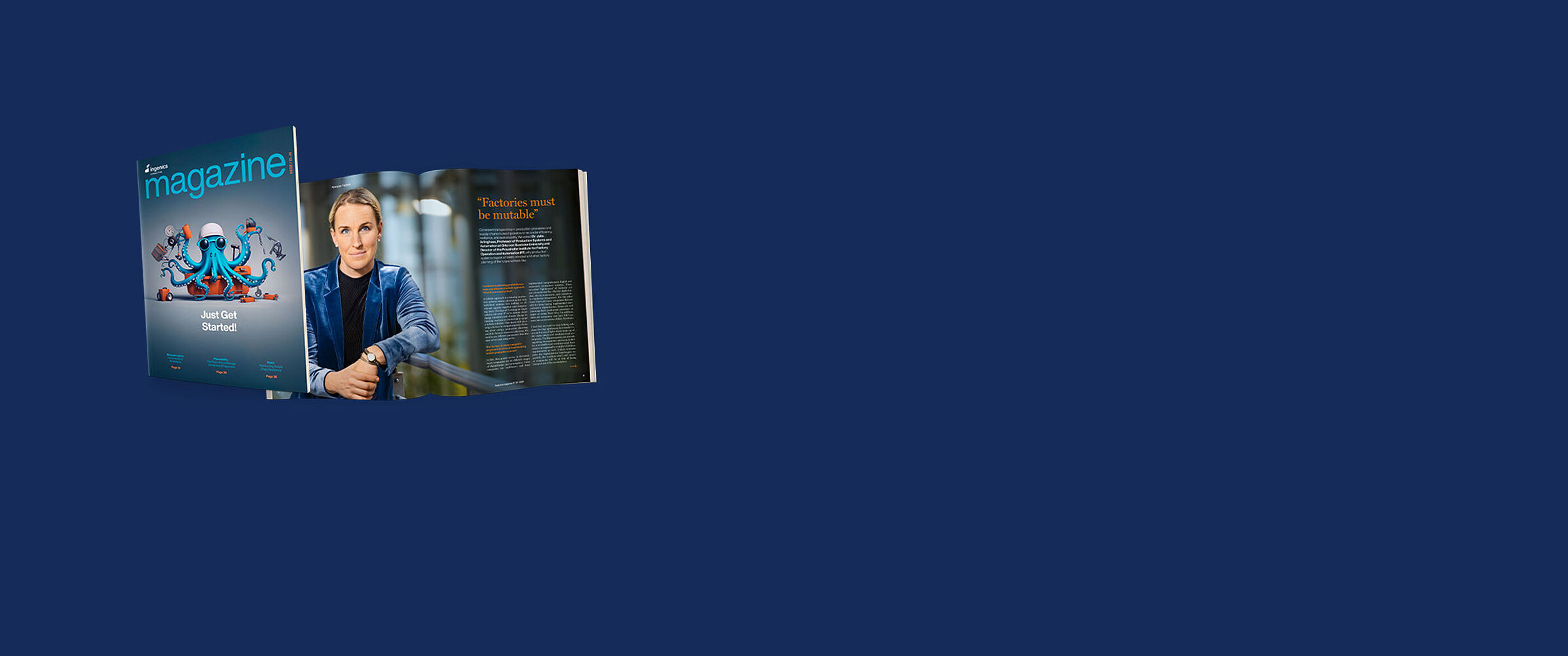
Workspace Design Irrespective of the Workplace
Working from Anywhere?!
Where are you sitting right now as you read these few words? At home? On the train, at the airport? In a coworking space, on a beach, or a classic office? Have you set your laptop down on a height-adjustable desk while you lean back and relax on an ergonomic desk chair? Or are you balancing your cell phone in one hand while opening the door for the mailman and kicking a Lego block out the way How about your employees and coworkers – where are they right now?
An increasing number of people are working remotely, especially ones in administrative roles. Decentralized work has become more relevant and, in the future, will have a lasting effect on the way we work and our office landscapes. The office was, and remains, a key component of corporate culture and something to identify with. Growing digitalization is transforming the office from a place of work to a place of exchange and creativity. At the same time, it is no longer the primary or sole place for providing services and this must be considered while planning. Companies should overhaul their office designs with this in mind and develop modern concepts for integrating corporate culture and corporate design when working remotely.
Office Design: What Does the Office of the Future Look Like?
The requirements for company office spaces and workplaces will change significantly in the foreseeable future. With remote work on the rise, formal workstations will not be needed to their current extent. Those who do not work on site every day can also share their workstation with others. The “shared desk” concept will replace dedicated personal desks in the future. This raises multiple questions, including what is the optimal mix of working locations, what office spaces are critical, and which ones can flexibly be leased.
In the new working world, the office is going to be a place that is optimally adapted to changed tasks and ways of working. It is not only about technical requirements. The new working world involves fundamental changes in office design and usage.
Optimizing Space and Lowering Costs
Office-space layouts must be revisited. Rooms and workstations must be reconsidered and adjusted accordingly so that the available space is optimally used at all times. An increasing number of people are working from home or remotely, so there is less demand for fully equipped workstations. On the other hand, there is significantly increased demand for workstations that can be flexibly used. When multiple employees share a desk, the workstation equipment must also be reconsidered. What roles need special tools? What parts of the IT infrastructure need to be adjusted? Are all technical devices compatible with each other? How many quiet spaces are needed? Cost savings can be made on office spaces by adopting these adjustments. Sustainability factors can also optimize the office while reducing costs. Implementing a “paperless office” can lower individual demand for printers and printing materials and, as an added bonus, make an office tidier.
Activity Instead of Presenteeism
Why should someone go to the office if their home is nicer? The things that employees need from their office have changed. Simply having a desk, stable Internet connection, and coffee machine is no longer enough. Rather, the office should be an inviting location where people enjoy being. More than ever before, it is a place where people can interact in person, communicate, and work creatively. Company premises must be modified and designed accordingly.
Merely presenting for work is not a factor of success anymore and the focus is now on the results and quality of work instead. For work in the office, that means employees come on site in a targeted way for certain tasks or activities. This is referred to as activity-based working. Employees themselves can decide the location and working environment for each activity and/or manage them organizationally.
When redesigning workplaces in favor of something more activity-based, manufacturing companies can consider another issue at the same time: proximity to the product. Spaces for brainstorming and desk-based workstations can be positioned nearby production and even connected with it visually. This is important so that the workforce’s understanding of quality and loyalty to the product is preserved despite working at different locations.
Health in the Workplace – the Sporting Office

With office spaces being redesigned, the topic of health management is gaining prominence. Most companies have already implemented height-adjustable desks, ergonomic desk chairs, and usage-specific lighting design. Decision makers face the task of thinking about new workplace concepts and alternative office furnishings. Spaces for exercise, yoga, and relaxation during a lunch break, meetings, or after clocking out are also part of a healthy workplace. It is important to identify the expectations and desires of each employee and fulfill them accordingly.
Many companies hesitate to invest in modern design elements like these because of the high costs. However, numerous rental and leasing options now make it easy to try out specific showcases in selected areas at first before spending large amounts of money across the board. It is generally recommended to design new office landscapes to be flexible so that new ideas can be tested. Each company must decide individually what design works best for them and give its employees optimal support when they perform their activities.
When employees are happy with their working environment and have social areas offering options for exchange and space for creative brainstorming, they work more productively. High satisfaction in everyday work combined with company-provided health benefits can reduce the amount of sick leave taken by employees. In addition, positive office design can also influence the company’s external impact through employer branding.
Working from Home: Part of the Company without Leaving the House

What Challenges Must Be Overcome When Working from Home?
With the increasing number of employees working from home, including over a longer period of time, there are new challenges for companies and their workforces:
- What equipment is needed in the home workspace?
- How is process security ensured?
- What challenges are employees facing?
- How are labor laws and data protection upheld?
- What other organizational matters are there?
Home-Workstation Design
Workstations at home and in the office should ideally be equivalent to each other. To achieve this, companies must provide their employees with appropriate equipment. This equipment should always be chosen suitably for the task and the individual needs of employees and managers. In the best-case scenario, home workstations are designed in a way that reduces surrounding distractions as much as possible.
The health of employees must remain a consideration even when they work from home. The kitchen table is not a permanent solution for productive work. Desks, office chairs, and lighting must meet the requirements for ergonomic work and technical standards.
In situations where employees do not have a dedicated room for a home office, employers can offer them small and simple solutions, such as a wall-mounted, fold-up worktable. Large investments are not necessary. Many space-saving office furnishings can also be leased, which lets companies use them flexibly and cost-effectively.
The basic package for work-from-home equipment also includes technical devices such as a laptop, screen, keyboard and a matching media interface to connect all the devices. The right software solutions are also needed alongside hardware for work done from home.
Challenges for Employees
Working from home does not have the same degree of suitability for every employee and activity. Often, people do not have space for a separate office. Also, there might be conflicts balancing work with family commitments, or there could be a social burden from the various requirements when working from home.
Challenges for Process Security
When the majority of work is done from home and no longer from the office, there is a risk that communication will deteriorate and bring down transparency about the latest progress and workloads. Accordingly, clear communication guidelines are needed because interactions with coworkers will no longer happen spontaneously and will need to be planned instead. This can have a negative impact on innovativeness.
There still need to be safeguards to ensure productivity when working from home, too. Stringent time management, rules about working hours (core working hours), a transparent overview of work, and standards such as the “5S method” must remain a given when working from home. This means people in a company’s leadership roles are called on to motivate their employees to organize themselves accordingly.
Challenges with Labor Laws and Data Protection
When the majority of work is done from home and no longer from the office, there is a risk that communication will deteriorate and bring down transparency about the latest progress and workloads. Accordingly, clear communication guidelines are needed because interactions with coworkers will no longer happen spontaneously and will need to be planned instead. This can have a negative impact on innovativeness.
There still need to be safeguards to ensure productivity when working from home, too. Stringent time management, rules about working hours (core working hours), a transparent overview of work, and standards such as the “5S method” must remain a given when working from home. This means people in a company’s leadership roles are called on to motivate their employees to organize themselves accordingly.
In order for companies not to breach applicable laws when they implement working from home, it is important that they are aware of potential stumbling blocks. The relevant requirements under labor laws and for occupational safety and health must apply to all employees at the office, at home, and any other potential places or forms of work. Corresponding audits ensure that companies have complied with these provisions. Furthermore, it is crucial that considerations are made to protect personal data (data protection) and company data (information security).
Employees must be informed about the latest requirements in these fields so that they can satisfy them in a home environment. Unlike at an office, staff often share home workspaces with people who do not belong to the company, such as family members or roommates. Other security challenges when working from home are private usage of company hardware and using privately owned equipment for work.
Collaboration Hubs for Added Flexibility

Communication and exchange are the core themes of the “new office”. They are bolstered when office spaces or company-owned “collaboration hubs” are also opened up to other internal areas, external workers, collaboration partners, or students. Not as an “open day” sort of event, but rather with corresponding rules and in compliance with requirements for (data) security. A think tank with external input, for example, can promote communication and knowledge exchange across (mental) boundaries within a company.
Collaboration hubs are appealing to more than just start-ups. Even established businesses can utilize the benefits of this flexible form of workplace. They can access external providers of shared working spaces or offer their own spaces for employees and people outside the company. Models like these are not limited to a city, either. In fact, rural collaboration hubs in particular are a proven practice. Employees from neighboring regions do not have to make a choice between working from home or commuting to a distant office. Instead, they can make use of a professional office structure at a collaboration hub near where they live.
How Do I Organize Distributed Work
Companies face the challenge of (re)defining holistic organizational conditions for their future activities at different places of work. The focus must be on a flexible choice of workplace and place of work. In turn, this requires creating a culture where working from home or remotely is accepted as equal to working in an office. It also demands a corresponding level of trust in employees.
These can be some of the questions needing answers:
- Is data protection and compliance with the workplace directive safeguarded at all potential places of work?
- How can specific customer demands (e.g., requirements under information-security standard ISO/IEC 27001) be met everywhere?
- Which tasks can only be done at the office and not remotely?
- What rules will apply for accessibility and communication within distributed teams?
- How can it be ensured that employees are motivated, feel good, and identify with the company wherever they work?
How Can We Support Most Effectively When Designing Distributed Workplaces?
The Office – More Than a Workplace
We can help you redesign conventional offices into activity-based offices.
This includes planning and implementing shared-desk concepts and integrating administrative areas to make them cross-functional. The priority here is on a process-based approach that breaks down silo mentality and brings together the different areas in a process chain.
We work with you to plan and design a spatial link between production and administration, at the main office as well as in home workspaces and regional collaboration hubs. In cooperation with our partners, we develop design concepts – tailored to your needs – for different working areas for individual and activity-based demands, such as thinking, focused work, exchange, discussion, and collaboration.
We put together business cases to identify the investments that are a good choice for your business and the results that can be achieved with them. For this, we also advise you on models for financing a redesign. That can mean finding out if leasing, buying, or renting out additional space might be the best option for you. The key question in this is what expenses will lead to savings, and what are the savings? The goal is to be cost-neutral while increasing productivity.
Together with you, we analyze what types of work there are at your company. We come up with “personae” – model employees. Based on them, we can identify the needs in connection with spatial design, equipment, and working models, both now and in the future. Furthermore, we advise you on activity-based operational processes that you can use to manage workloads from the office, from home, or remotely.
Remote Work – Working from Home and Collaboration Hubs
For the optimal integration of remote work with everyday company life, we create concepts tailored to your situation for working from home or a collaboration hub. These concepts are closely connected to the flexible work done in the office and through desk sharing. We rely on internal and external benchmarks for the spatial and organizational design.
In addition, we work with you to devise a range of equipment for an optimal workspace outside the office – including with potential financing models. Fitting out a remote workspace also includes choosing targeted hardware and software.
Distributed work requires the right organizational conditions. We help you develop guidelines for employee presence at specific times and locations and rules for complying with statutory provisions, such as occupational safety and health and information security, at all workplaces.
Employees need to use initiative when they work remotely. For this reason, we offer coaching for self-organization and time management.
Measuring Success – We Know What Matters
Together with you, we select suitable key performance indicators (KPIs) that you can use to measure the success of spatially and organizationally redesigned workplace options in your company. A few selected KPIs for office-based and remote work are provided below.
Office-specific KPIs
- Space per employee and per type of work
- Change of space distribution (individual offices, creative areas, etc.)
- Number of workstations per employee
- Utilization of meeting rooms
- Infrastructure costs, ancillary costs, and ancillary spaces
- Frequency of office usage
KPIs for work from home or remote work
- Distance or radius of home locations from place of employment
- Rate of employees working from home or remotely
- Overview of office equipment borrowed




